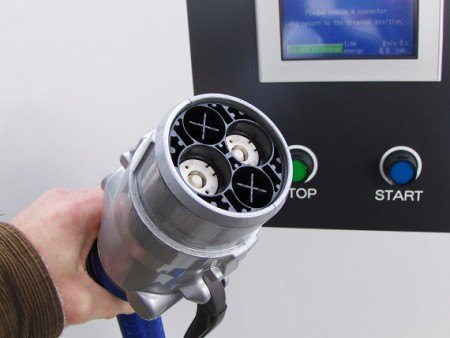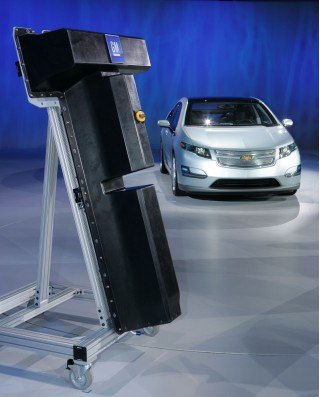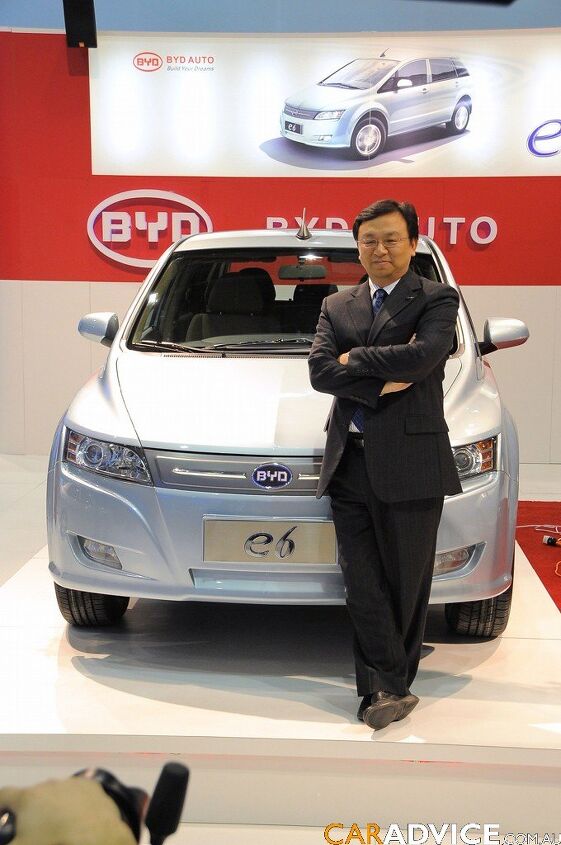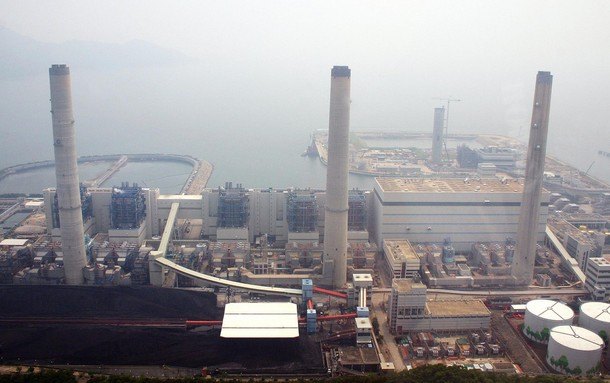#subsidy
California Bill Would Cap EV Subsidies By Income
One of the bloodiest battlegrounds in the electric car wars is the topic of government subsidies for EV purchases. In the American case, it’s the $7500 federal tax credit for EVs and the various state incentives including California’s current $2500 rebate. In Europe and Asia, a variety of EV promotion schemes have frequently been the subject of acrimonious debate. Much of the disagreement arises regarding the perceived “fairness” of rebates: defenders of subsidies generally claim that they help put EVs in the hands of middle-class consumers, with critics charging that they only serve to line the pockets of the wealthy. Now one California lawmaker wants to revamp the state’s subsidy program by capping the income level for households receiving EV rebates.
Ontario Giving $1,000 Rebate On EV Chargers
Perenially broke Ontario is now subsidizing electric vehicle charges. Consumers can claim as much as $1,000 of the total cost of the charger
U.S. Congress Stops Ethanol Subsidies & Tariff on Brazilian Imports
After spending thirty years and $45 billion dollars encouraging the use of ethanol the United States Congress has adjourned for the year without extending tax subsidies to the to ethanol industry. The subsidy currently costs taxpayers $6 billion a year. A related import tariff on Brazilian ethanol was also allowed to expire. With a wide group of critics, cutting across political and ideological lines, the tax break had become unpopular in Washington. Business interests in the food and cattle industry as well as environmentalists opposed the law which paid 45 cents per gallon to fuel blenders to subsidize their costs for producing E10 gasoline/ethanol blend. The subsidy resulting in corn being diverted from feedlots and food processors to ethanol production, raising the cost of many foodstuffs. The environmental movement now opposes corn ethanol as a fuel it because it considers the fuel and its production to be “dirty”, in the words of Friends of the Earth.
Bipartisan Bill Seeks To End Cornerstone Ethanol Subsidy
Yesterday evening I directed some ire at President Obama’s continued reliance on ethanol as a major plank of his do-nothing transportation/energy agenda, noting
That extra money for 10,000 E15-capable pumps? That’s because no gas station owner will pay to install a pump for a kind of fuel that only cars built since 2001 can use… and which the auto industry has tried to ban. And why E15 in the first place? Because blenders can’t sell enough E10 to blend the government-mandated amount of ethanol and collect their $6b this year in “blender’s credits” to do so. A subsidy to support a subsidy which in turn props up yet another subsidy (I may have missed a subsidy in there somewhere). You can’t make this stuff up.
The “cornerstone” subsidy that all other ethanol subsidies support is the Volumetric Ethanol Excise Tax Credit, or VEETC, or “blender’s credit,” a $6b per year subsidy that directs 45 cents to refiners for every gallon of ethanol they blend with gasoline. The VEETC nearly died in December’s lame duck session, only to be revived as a way to buy votes for the President’s tax policy. Now, however, The State Column reports that a bipartisan Senate bill has been introduced that would eliminate both the VEETC and import tariffs on foreign-made ethanol. And with a rash of bad news coming out about ethanol, this could just be the opportunity to kill this wasteful government subsidy with fire.
What's Wrong With This Picture: Fixing Transportation Edition
President Obama devoted his weekly address to energy and transportation policy this week, speaking to the nation from an Allison hybrid bus transmission plant in Indiana. A White House blog post accompanying video of the President’s speech included a large infographic on “The Obama Energy Agenda And Gas Prices,” the transportation-oriented section I’ve excerpted above. This one section is actually a fairly good representation of Obama’s auto-related energy policy preferences, and illustrates why I often find myself criticizing the president here at TTAC.
Trade War Watch 18: DetNews Fumbles With The Saber
Just over one week ago, a Detroit News piece pointed me towards a letter written by Senators Carl Levin and Debbie Stabenow, which took China to task for considering draft legislation that might possibly require more technology transfers to Chinese companies as a precondition to market access. Having chased down both the letter and the US National Trade Estimate it was based on, as well as several reports on the draft legislation itself, I wrote a lengthy piece about how Senators Levin and Stabenow were rattling the saber about what appeared to be a complete non-issue. In that piece, I not only debunked the senators’ concerns, but I also pointed out that China’s local consumer EV subsidies were the far more worrying potential trade barrier, as we have been hearing that they require that all qualifying EVs be built in China and sold with Chinese brands (a condition at odds with at least the 2004 version of China’s Auto Industry Development Plan, which stated “local governments should encourage fair competition among motor vehicles made by different places on the local market. They are not allowed to carry out any discriminative policy or measure which may lead to discrimination against non-locally manufactured automobile products.”). And it turns out that my 2,000+ words didn’t put everyone to sleep, as a new DetNews piece re-reports the Stabenow/Levin letter with the inclusion of a new motivation never mentioned in their actual letter, to wit:
For electric or plug-in vehicles to qualify for incentives under the proposed rules, they must be produced in China — by a Chinese carmaker or in a joint venture with a Chinese company
Ignoring for a moment that this wasn’t explicitly mentioned in the letter, there’s another issue here: subsidies aside, building any car in China requires a joint-venture. More importantly, China need not establish any barriers to the sale of imported plug-in or hybrid cars for the simple fact that the Toyota Prius’s epically weak sales there prove that imported NEVs can’t compete in the market. Of course subsidies may change that, but even more important is the issue of registration limits: if China requires EVs to be locally-made in order to waive Beijing’s registration restrictions, that could create more of a barrier than any cash subsidy. Meanwhile, neither Daimler nor Toyota nor VW nor BMW seems to have a problem with building EVs locally under a JV (cost and supply chain make Chinese production the logical choice anyway, necessitating a JV). The DetNews (and presumably Senators Levin and Stabenow) are getting closer to understanding the problems with China’s New Energy Vehicle Plan, but it seems they may yet have some more TTAC reading to do.
Germany To Match Obama EV Goal… Five Years Later
President Obama’s goal of having a million plug-in vehicles zipping around American roads by 2015 faces some serious challenges, as report after report casts doubt on the chances of the hoped-for level of adoption in the hoped-for timeframe. Meanwhile, the president’s defense of his plan’s practicability… leaves quite a bit to be desired. Regardless, the President’s goal is receiving some unexpected support as Automotive News Europe [sub] reports that
Germany’s cabinet plans to commit billions of euros to boost the electric auto sector so that 1 million cars are registered by 2020
Ethanol Futures Tumble As Blender Credit Renewal Faces Opposition
The ethanol industry might have enjoyed a small popularity bump when NASCAR switched to E15 (15% ethnol blend) gas, but it’s facing one of its biggest tests yet, as the so-called “blender’s credit” draws within a month of its expiration date. And the signs aren’t looking good for the most important subsidy in the ethanol playbook. Bloomberg reports that 17 Senators from both parties are pushing to end the 45 cent-per-gallon tax credit for ethanol blenders (and 54 cent-per-gallon import duty), and they’re opposed by only 13 Senators openly pushing for renewal. Plus, they’ve got a pretty strong argument:
If the current subsidy is extended for five years, the Federal Treasury would pay oil companies at least $31 billion to use 69 billion gallons of corn ethanol that the Federal Renewable Fuels Standard already requires them to use. We cannot afford to pay industry for following the law
Korea Invests $12.5b In Li-ion Battery Sector
With analysts already worrying about Lithium-ion battery oversupply in Japan and the US, the Korean government is shaking up the sector even more by announcing an investment of 15 trillion won ($12.5b) in the country’s battery sector. Called “Battery 2020 Project,” the money will be spent on building up Korean R&D capabilities, with the goal of improving the country’s ability to source Li-ion components. Korea currently imports many of the components needed for its domestic battery industry, and according to Yonhap, this investment will seek to develop Korean sources for up to 75 percent of the battery industry’s components by 2020. A government official explains:
South Korea’s Samsung SDI and LG Chem already control 38 percent of the market, but actual percentage of local parts and technology used to make these products stand at less than 20 percent
BYD: Boss Yells "Deutschland!"
Got a nice empty property in an industrial park in Germany? Centrally located, close to a major airport like Frankfurt, or Munich would be a plus? Then we know some Chinese you may want to talk to. They are in Shenzhen and work for BYD. BYD is coming to Europe. And they want to put their European HQ right into the German hornet’s nest.
Reuters And WSJ Get Unglued Over Chinese Plug-In Subsidy
China has finally revealed its worst kept secret and announced a pilot program for five Chinese cities. It’s raining cash for buyers of electric vehicles and plug-in hybrids. And it “reflects Beijing’s resolve to foster domestic brands,” says Reuters.
Really? At first glance, there is no discrimination against laowei cars.
$11b Electric Drive Vehicle Deployment Act Introduced, Industry Says "No Thanks"
The Detroit News reports that two versions of the Electric Drive Vehicle Deployment Act of 2010 will be introduced today in the House and Senate. Both bills would spend about $11b by sending $800 million to $1 billion five to eight “deployment communities.” One of the EDVDA’s bipartisan sponsors, Rep Judy Biggert (R-IL) explains that these funds
will help regional communities establish themselves as models for the development and installation of the next generation of transportation infrastructure, including public charging stations
The bill is being backed by several small EV firms, like A123 Systems and Bright Automotive, under the rubric of the Electrification Coalition. And despite the fact that everyone loves a good subsidy, the mainstream automakers are not amused.
Editorial: Mr Whitacre Goes To Washington
GM’s government-installed Chairman/CEO Ed Whitacre hasn’t been wildly popular with Detroit insiders, earning dismissive raspberries from more than a few corners of the industry’s peanut gallery. But now that his reign of executive terror is over, Detroit seems to be learning how to stop worrying and love the former AT&T man. As Whitacre prepares for his first visit to Washington DC as head of GM, the local media and other members of “Team Detroit” are making their peace with Whitacre. So what lies beneath the new united front?
























Recent Comments